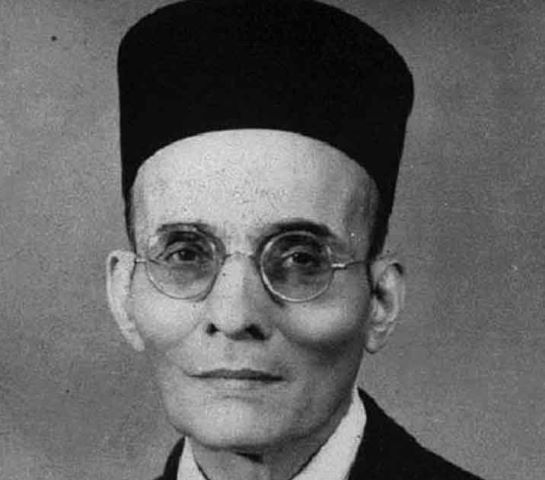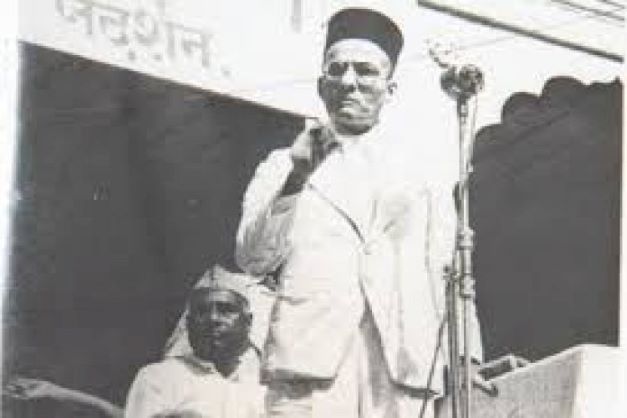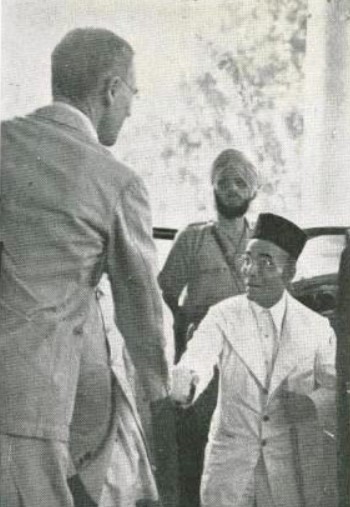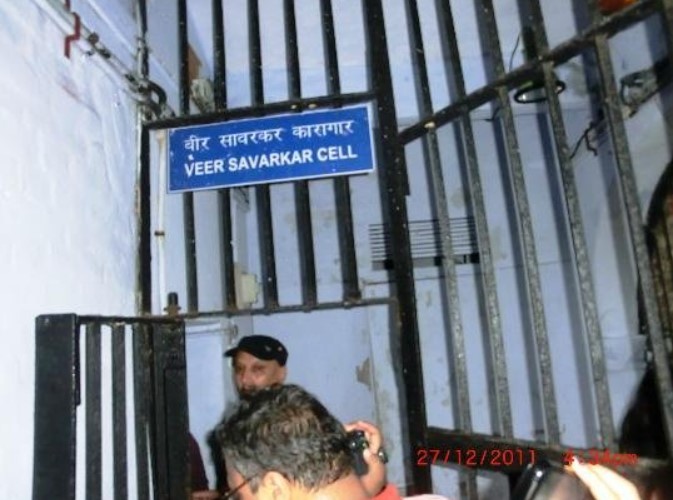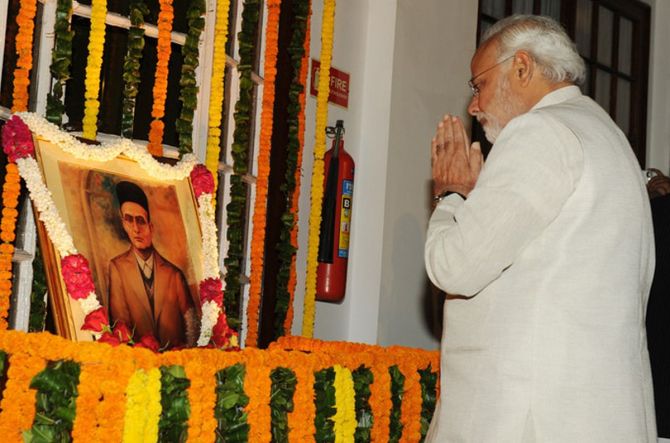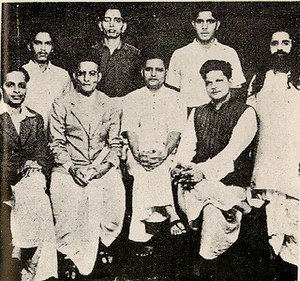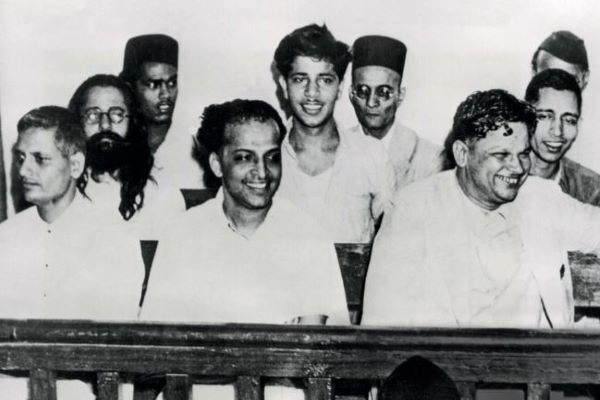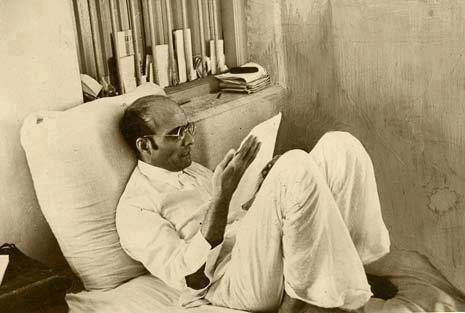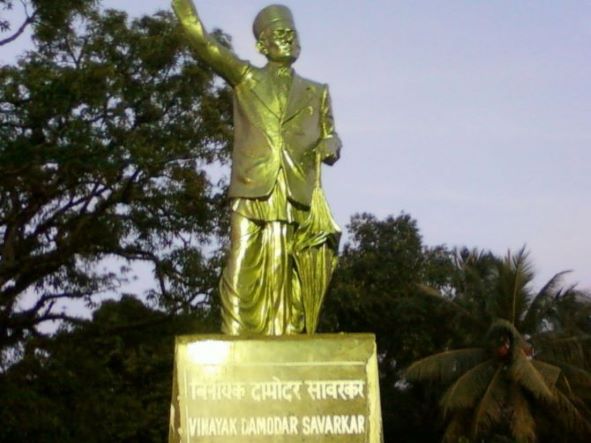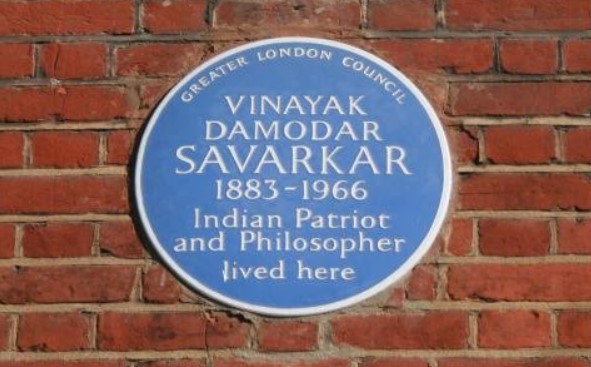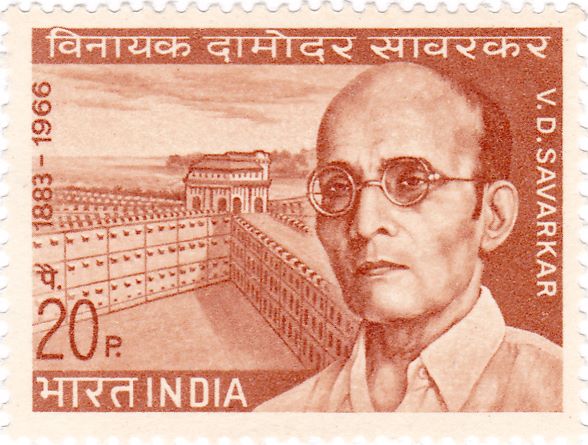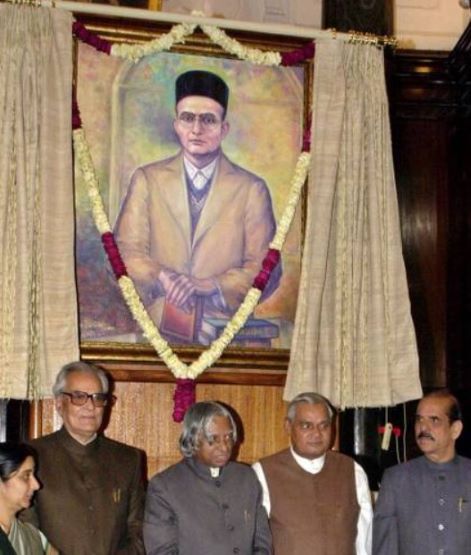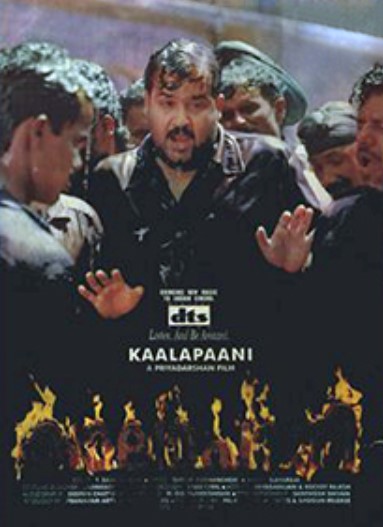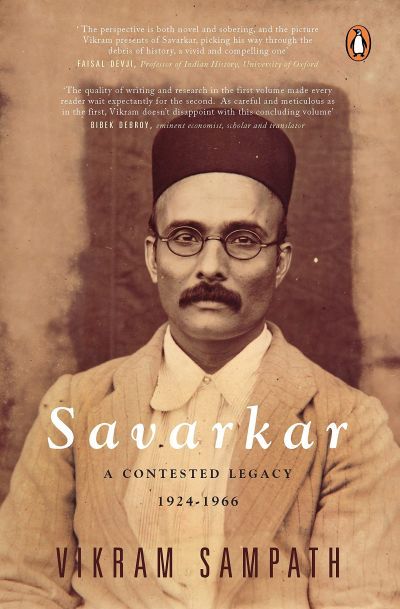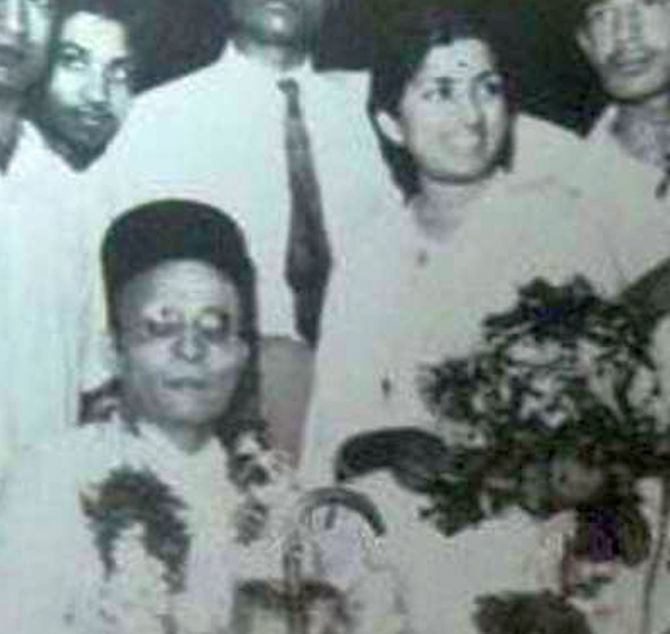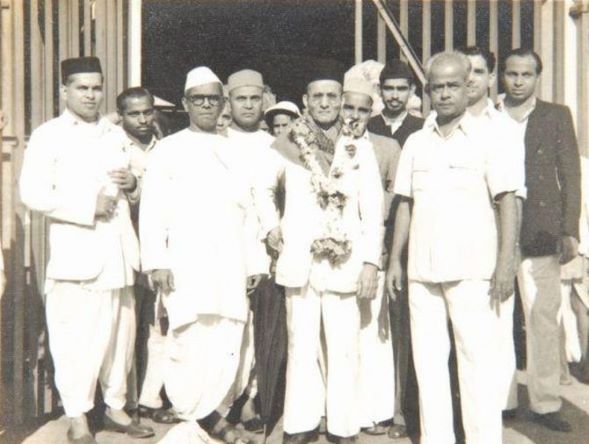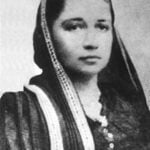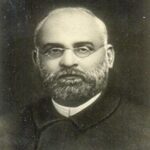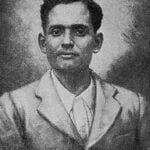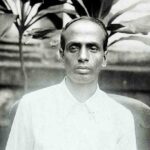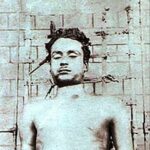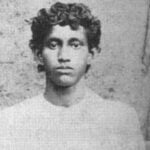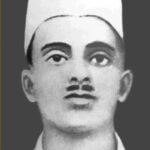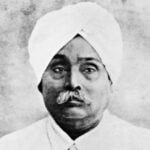Vinayak Damodar Savarkar Age, Death, Wife, Children, Family, Biography & More
| Bio/Wiki | |
|---|---|
| Nickname | Veer [1]Deccan Herald |
| Profession(s) | • Revolutionary Freedom Fighter • Author |
| Famous for | Being the president of the Hindu Mahasabha who advocated the idea of India as a Hindu Rashtra (Hindu Nation) |
| Politics | |
| Political Party | Hindu Mahasabha |
| Personal Life | |
| Date of Birth | 28 May 1883 (Monday) |
| Birthplace | Bhaghur, Nashik district, Bombay state, British India (present-day Maharashtra, India) |
| Date of Death | 26 February 1966 |
| Place of Death | Bombay, Maharashtra, India |
| Age (at the time of death) | 82 Years |
| Death Cause | Prolonged illness due to fast [2]News18 |
| Zodiac sign | Gemini |
| Nationality | Indian |
| Hometown | Bhaghur, Nashik district, Bombay state, British India (present-day Maharashtra, India) |
| College/University | Ferguson College, Pune |
| Educational Qualification(s) | • Bachelor of Arts degree from Ferguson College, Pune in 1905 • Studied Law in England on scholarship |
| Religion | Atheist [3]History Under Your Feet Blog |
| Caste | Chitpavan Brahmin [4]Vinayak Damodar Savarkar: The Much-maligned and Misunderstood Revolutionary and Freedom Fighter |
| Relationships & More | |
| Marital Status (at the time of death) | Widower |
| Marriage Date | February 1901 |
| Family | |
| Wife/Spouse | Yamunabai Savarkar (m. 1901–1963)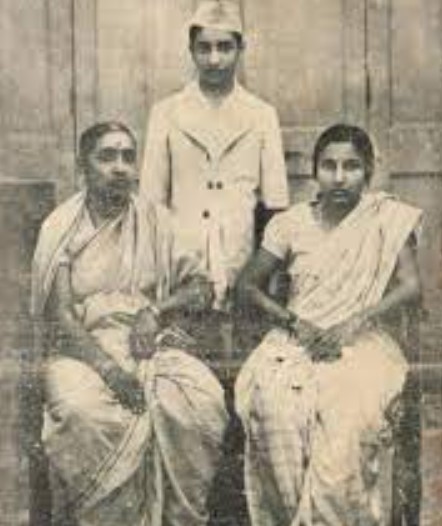 |
| Children | Son- Vishwas Savarkar (employee at Walchand Group and an author)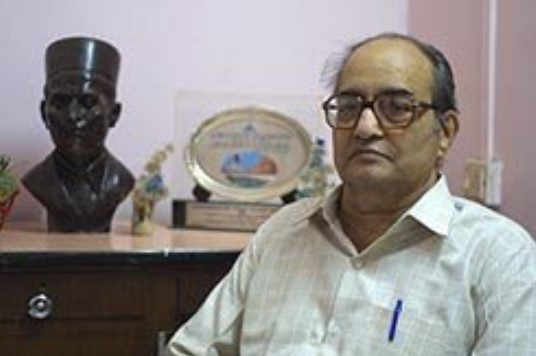 Daughter- Prabhat Chiplunkar Grandson- Ranjit Savarkar 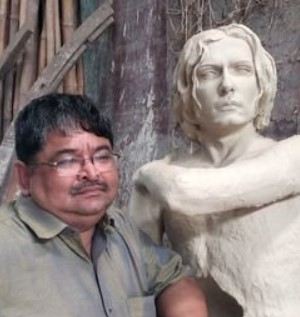 Note: Vinayak Damodar Savarkar's first son's name was Prabhakar, an infant, who died of smallpox when Vinayak was in London. |
| Parents | Father- Damodar Mother- Radhabai Savarkar |
| Siblings | Brothers- Ganesh Damodar Savarkar (Indian politician, activist, nationalist, and founder of the Abhinav Bharat Society) and Narayan (freedom fighter)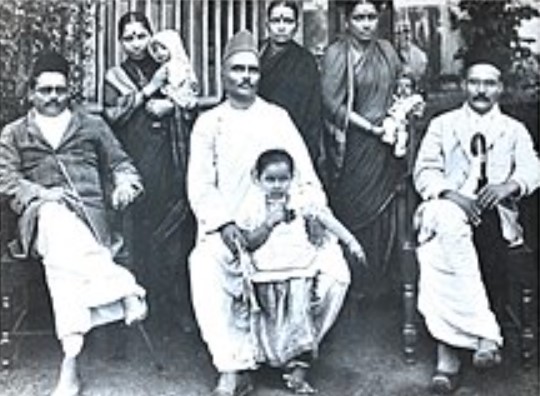 Sister- Mainabai (freedom fighter) |
Some Lesser Known Facts About Vinayak Damodar Savarkar
- Vinayak Damodar Savarkar was an Indian politician, revolutionary activist, and acclaimed author. In 1922, he was detained by the British government in Ratnagiri Jail in Maharashtra, where he developed the political ideology of Hindutva following which he is recognised as a ‘Hindu Nationalist.’ Vinayak Damodar Savarkar was the leader of the Hindu Mahasabha political party. During his tenure in the Hindu Mahasabha, he focussed on popularizing the term Hindutva (Hinduness) so that the main essence of Bharat (India) should be created through Hinduism. Although Savarkar was a follower of the Hindu philosophy, he was an atheist. [5]A disowned father of the nation in India: Vinayak Damodar Savarkar and the demonic and the seductive in Indian nationalism by Ashis Nandy Vinayak Damodar Savarkar was the founder of a secret society called Abhinav Bharat Society, which he founded along with his brother during the Indian independence movement. He was a part of revolutionary organisations such as India House and the Free India Society when he was studying law in the United Kingdom. He died on 26 February 1966 due to prolonged illness.
- In 1901, Savarkar entered into wedlock with Yamunabai Savarkar, more affectionately known as Mai, in Nashik. Her real name was Yashoda. The wife of his elder brother was a friend of Yamunabai. Vinayak was fond of writing patriotic poems and ballads, and after his marriage to Yamunabai, his wife started lending her voice to these poems and ballads. Soon, she actively started participating in the revolutionary activities of the Atmanishtha Yuvati Samaj as its member. This organisation was set up by the sister-in-law of Vinayak Savarkar to inculcate the feeling of patriotism among the Indian women. During the meetings of this organisation, the women used to sing the songs of Aba Darekar and the poems of Vinayak Savarkar. Bhaurao, the father of Yamunabai, financially helped Vinayak to study at Fergusson College in Pune and bore all his educational expenses.
- When Vinayak Damodar Savarkar was in England, Shyamji Krishna Varma, an Indian nationalist, helped him pursue his law studies in England on a scholarship. Soon after completing his law studies, Savarkar became a barrister in 1909 and then a member of Gray’s Inn. In the same year, he published a book titled The Indian War of Independence, which alarmed the British government, and was arrested in 1910.
- Vinayak Damodar Savarkar was detained in 1910 by the British government and was escorted to India soon after his connections with the revolutionary group India House started emerging. When he was travelling back to India, he tried to escape when he was on the ship, which was docked in the port of Marseilles. However, Vinayak Damodar Savarkar’s all attempts failed when the French port officials caught him and handed him back to the British government under the charges of contravention of international law. On reaching India, Vinayak Damodar Savarkar was awarded two life imprisonment punishments that totalled fifty years of jail at Cellular Jail in the Andaman and Nicobar Islands.
- For his revolutionaries activities, the British government charged him under various sections including waging war or abetting the waging of war against His Majesty, the King-Emperor of India, conspiring to deprive His Majesty the King of the Sovereignty of British India or a part of it, procuring and distributing arms, and abetting the murder of Jackson, the then collector of Nasik, procuring and distributing arms in London and waging war from London, delivering seditious speeches in India from January 1906 onwards and in London from 1908 and 1909. [6]Rediff
- As a noted author, Vinayak Damodar Savarkar published several books in which he advocated that complete independence in India could be attained only through revolutionary means. The British government banned one of his books titled The Indian War of Independence, which he wrote about the Indian Rebellion of 1857.
- When he was released from jail, in 1937, Vinayak Damodar Savarkar started travelling all across India to advocate Hindu political and social unity as a writer and an orator. In 1938, he was appointed as the president of the Marathi Sahitya Sammelan in Mumbai, and as a president of this organisation, he started encouraging the philosophy of India as a Hindu Rashtra (Hindu Nation). Vinayak Damodar Savarkar also began organising his own army consisting of Hindu men so that he could liberate India from colonial rule along with protecting the country and its Hindus.
- Vinayak Damodar Savarkar critically opposed the decision of the Congress working committee, which it took in its Wardha session of 1942. The resolution was referred to the British government and was read as,
Quit India but keep your armies here.”
According to the Congress party, this resolution was taken up to defend India from a possible Japanese invasion. However, Vinayak Damodar Savarkar was against the presence of Britishers in India in any form. Later, while serving as the president of Hindu Mahasabha, he started feeling stressed at work while carrying out his duties, and in July 1942, he resigned from the post. During this time, Mahatma Gandhi started his Quit India Movement against British rule in India.
- In 1948, soon after the assassination of Mahatma Gandhi, he was captured in Gandhi’s murder case as a co-conspirator, but the lack of evidence acquitted Vinayak Damodar Savarkar from all the charges. He was widely admired in Indian politics after the independence of India when the Bharatiya Janata Party (BJP) came into power in 1998, and his political ideologies and Hindu creeds were again remembered in 2014 when the Modi-led BJP government came into power at the centre.
- When Vinayak Damodar Savarkar was twelve years old, he provoked his fellow students to attack a mosque in his village after the Hindu-Muslim riots in Maharashtra. [7]The Economist Upon asking the reason for the attack, in a conversation with a media house, Savarkar stated,
We vandalized the mosque to our heart’s content.”
- In 1909, Ganesh Savarkar organised an armed revolt against the implementation of the Morley-Minto reforms. Vinayak Savarkar was arrested in London and then in Marseille for his involvement in the plotting of the revolt. To escape police arrest, he lived at the house of Bhikaiji Cama in Paris for some time. Soon after his arrest in Marseilles, the French government protested against the British government, and it argued that the British government could not detain Vinayak Damodar Savarkar unless they took appropriate legal trials for his statements. In 1910, his case was presented before the Permanent Court of International Arbitration, and in the next year, its verdict was pronounced officially. This case took the shape of controversy when it was covered by the noted media houses in France and attracted international attention. In the verdict, the court stated,
Since there was a pattern of collaboration between the two countries regarding the possibility of Savarkar’s escape in Marseilles and there was neither force nor fraud in inducing the French authorities to return Savarkar to them, the British authorities did not have to hand him back to the French for the latter to hold rendition proceedings. On the other hand, the tribunal also observed that there had been an “irregularity” in Savarkar’s arrest and delivery over to the Indian Army Military Police guard.”
- Soon, Vinayak Damodar Savarkar was taken to Bombay by the British government where he was detained in the Yerawada Central Jail in Pune. On 10 September 1910, the court trials begin before a special tribunal, and he was convicted under two charges. One, he was charged for his involvement in the murder of Nashik Collector Jackson, and second, he was involved in a conspiracy against the King-Emperor and was charged under the Indian penal code 121-A. After two trials, Vinayak Damodar Savarkar was sentenced to life imprisonment for fifty years. He was twenty-eight years old at the time of conviction. On 4 July 1911, he was transported to the Andaman and Nicobar Islands, and was kept in the Cellular Jail as a political prisoner.
- When Vinayak Damodar Savarkar was in Nashik jail, his wife came to meet him in the prison. She travelled from Trimbakeswar to Nashik along with her brother on horseback. At Nashik, none of her friends gave her shelter as they all fear the British government, and she had to spend a rainy night at a temple in Nashik.
- After Vinayak Damodar Savarkar was detained in the Cellular jail, he filed several petitions to the Bombay Government for concessions in his sentences, but all his applications were rejected, and he was also informed by the government that his second sentence would be considered only after the expiry of his first sentence. On 30 August 1911, Vinayak Damodar Savarkar filed his first petition, and on 3 September 1911, it was rejected. Vinayak Damodar Savarkar filed his second petition before the Home Member of the Governor General’s council, Sir Reginald Craddock, on 14 November 1913. In his petition, he described himself as,
Prodigal son” longing to return to the “parental doors of the government.”
Vinayak Damodar Savarkar further wrote that his release would strengthen the faith of many Indians in the British Government. He wrote,
Moreover, my conversion to the constitutional line would bring back all those misled young men in India and abroad who were once looking up to me as their guide. I am ready to serve the government in any capacity they like, for as my conversion is conscientious so I hope my future conduct would be. By keeping me in jail, nothing can be got in comparison to what would be otherwise.”
- Vinayak Damodar Savarkar again filed a petition in 1917, but this time he requested a general amnesty of all the political prisoners in the cellular jail. He was informed in February 1918 that his petition was presented before the British government. King-Emperor George V announced a Royal proclamation in December 1919, and this proclamation included the Royal pardon of the political offenders. On 30 March 1920, Savarkar filed his fourth petition to the British government while mentioning the Royal proclamation. In his petition, Vinayak Damodar Savarkar wrote,
So far from believing in the militant school of the Bukanin type, I do not contribute even to the peaceful and philosophical anarchism of a Kuropatkin [sic.] or a Tolstoy. And as to my revolutionary tendencies in the past:- it is not only now for the object of sharing the clemency but years before this have I informed of and written to the Government in my petitions (1918, 1914) about my firm intention to abide by the constitution and stand by it as soon as a beginning was made to frame it by Mr. Montagu. Since that the Reforms and then the Proclamation have only confirmed me in my views and recently I have publicly avowed my faith in and readiness to stand by the side of orderly and constitutional development.”
- This petition was rejected by the British government on 12 July 1920. The British government released his brother Ganesh Savarkar and not Vinayak Savarkar after considering his petitions. The British government gave a written justification for its actions. [8]Cultural Maharashtra It stated,
It may be observed that if Ganesh is released and Vinayak is retained in custody, the latter will become in some measure a hostage for the former, who will see that his own misconduct does not jeopardize his brother’s chances of release at some future date.”
- Vinayak Damodar Savarkar was moved to a jail in Ratnagiri on 2 May 1921. During his period in Ratnagiri jail, he wrote a book on “Essentials of Hindutva.” These compositions later formulated the theory of Hindutva in India. On 6 January 1924, he was released from jail but was not allowed to move out of the Ratnagiri district. Soon, he started organising a Hindu society or Hindu Sangathan in Ratnagiri. Vinayak Damodar Savarkar was granted a bungalow by the British government where he was allowed to meet the visitors. There, he met several influential Indian people including Mahatma Gandhi, Dr Ambedkar, and Nathuram Godse. During his house arrest at Ratnagiri, he became a proficient writer and remained there till 1937. Meanwhile, Vinayak Damodar Savarkar was released by the newly elected government of the Bombay presidency.
- During the Second World War, Vinayak Damodar Savarkar was serving as the president of the Hindu Mahasabha, and as a leader, he focussed on the slogan – “Hinduize all Politics and Militarize Hindudom.” Vinayak Damodar Savarkar stood in favour of the efforts made by the British government in India during the Second World War and requested the Britishers to provide military training to all the Hindu men. In 1942, Mahatma Gandhi initiated the Quit India Movement, which was opposed by Vinayak Savarkar. In his opinion, the Indian soldiers and civilians must obey the rules of the British government during the war period and stay alert to the war situations. He officially opposed the Quit Indian Movement by writing letters titled “Stick to your Posts” to the Hindu Sabhaites. [9]Hindu Mahasabha in Colonial North India, 1915-1930: Constructing Nation by Prabhu Bapu He wrote,
The members of members of municipalities, local bodies, legislatures or those serving in the army … to stick to their posts” across the country, and not to join the Quit India Movement at any cost.”
During the same time, Vinayak Damodar Savarkar encouraged the Hindus to participate in the armed forces to learn the art of fighting a war. [10]Rediff In 1944, the activists of Hindu Mahasabha protested against the meeting of Mahatma Gandhi and Jinnah. He condemned the proposals of the British government and Congress party for transferring the powers by making concessions to the Muslim separatists. After the independence of India, the vice-president of the Hindu Mahasabha, Dr Shyama Prasad Mookerjee, resigned from the party.
- In 1937, the Indian Provincial Election was won by the Indian National Congress by defeating the Muslim League and the Hindu Mahasabha. In 1939, Viceroy Lord Linlithgow stated publicly that India was eager to fight the Second World War following which several ministers of the Indian National Congress resigned from their respective posts in a protest against the Viceroy Lord Linlithgow. On the other side, this made the Hindu Mahasabha join hands with the Muslim League, under the leadership of Vinayak Savarkar. This alliance led them to win the elections in Sindh, NWFP, and Bengal provinces. The Hindu Mahasabha members joined the Muslim League government of Ghulam Hussain Hidayatullah in Sindh. At this moment, Vinayak Damodar Savarkar stated,
Witness the fact that only recently in Sind, the Sind-Hindu-Sabha on invitation had taken the responsibility of joining hands with the League itself in running coalition government.”
In Bengal, it joined hands with the Krishak Praja Party of Fazlul Haq in December 1941. In 1943, the Hindu Mahasabha party allied with Sardar Aurangzeb Khan of the Muslim League in the North-West Frontier Province.
- On 30 January 1948, after the assassination of Mahatma Gandhi, the police arrested Nathuram Godse and his companions and conspirators, who were involved in the murder. Nathuram was a member of the Hindu Mahasabha and the Rashtriya Swayamsevak Sangh. In a Marathi newspaper from Pune ‘Agrani – Hindu Rashtra,’ Nathuram Godse was working as an editor, and its daily newspaper was run by the company “The Hindu Rashtra Prakashan Ltd” (The Hindu Nation Publications). In this company, Vinayak Damodar Savarkar had an investment of rupees fifteen thousand. On 5 February 1948, Savarkar was arrested from his house and was charged with murder, conspiracy to murder, and abetment to murder. He was kept in the Arthur Road Prison, Bombay. During the investigation, a large number of papers were seized from his house by the British police; however, all these papers had no link with the murder of Gandhi.
- Later, the whole responsibility for Gandhi’s assassination was claimed by Nathuram Godse. Later, the Approver Digambar Badge told the police officials in his testimony that Nathuram and Vinayak Damodar Savarkar went to the last darshan (audience/interview) of Gandhi on 17 January 1948 along with Badge, Shankar, and Apte. Badge narrated the incident as,
Savarkar blessed them “Yashasvi houn ya” (“यशस्वी होऊन या”, be successful and return). Savarkar predicted that Gandhi’s 100 years were over and there was no doubt that the task would be successfully finished.”
- The Revolutionary activists Gopal Godse, Madanlal Pahwa, and Vishnu Karkare were released from the jail after the expiry of their punishments, and a religious program was organised in Pune in their release. During this time, Dr G. V. Ketkar, who was the grandson of Bal Gangadhar Tilak, provided some information about the conspiracy in the killing of Gandhi following which Ketkar was arrested. In the Maharashtra Legislative Assembly, Gopal Swarup Pathak, a senior advocate of the Supreme Court of India as a Commission of Inquiry, was appointed by the then Union home minister Gulzarilal Nanda to re-investigate the conspiracy in the murder of Gandhi. The Kapur Commission provided the evidence and the testimonies of Savarkar’s two close friends – Appa Ramachandra Kasar, his bodyguard, and Gajanan Vishnu Damle, his secretary. It was also stated in the court that C. I. D. Bombay kept an eye on the activities of Vinayak Damodar Savarkar from 21 to 30 January 1948, but it did not mention that Savarkar was meeting Godse or Apte during this time. Justice Kapur concluded:
All these facts taken together were destructive of any theory other than the conspiracy to murder by Savarkar and his group.”
- After the assassination of Gandhi, an angry group of people threw stones at Vinayak Damodar Savarkar’s home in Dadar, Bombay. Later, when he was discharged from all the allegations in the Gandhi murder case, Savarkar started delivering “Hindu nationalist speeches,” which resulted in his arrest. He resumed his political career after the ban on it was lifted and continued advocating the main social and cultural aspects of Hindutva. He was adored by his followers, and some of his disciples also helped him financially when he was in politics. Vinayak Damodar Savarkar and the sarsanghachalak of RSS Golwalkar were not close to each other, but more than two thousand RSS workers gave a guard of honour to Savarkar’s funeral procession after his death. McKean, in one of his books titled Divine Enterprise: Gurus and the Hindu Nationalist Movement, stated that during most of his political career, Vinayak Damodar Savarkar and the Congress disliked each other, and after the independence of India, Vallabhbhai Patel and C. D. Deshmukh, the veteran Congress leaders, did not succeed in making an alliance between the Indian National Congress and Savarkar. The congress party members in India were not allowed to participate in the functions that were specifically organised to honour Savarkar. At the first centenary function of India’s First War of Independence, which was held in Delhi in an independent India, Nehru refused to share the stage with him. After the death of Nehru, he was granted a monthly pension under the ministry of Prime Minister Shastri.
- Vinayak Damodar Savarkar abandoned food, water, and medicines on 1 February 1966, and he termed it atmaarpan (fast until death). During his last days, he published an article titled “Atmahatya Nahi Atmaarpan.” In this article, he stated,
When one’s life mission is over and the ability to serve society is left no more, it is better to end the life at will rather than waiting for death.”
Vinayak Damodar Savarkar died on 26 February 1966 at his home in Bombay, and his health conditions had become extremely serious before death. He felt difficulty in breathing and was declared dead at 11:10 a.m. (IST). His funeral was performed by his family and relatives, and the 10th and 13th day rituals of the Hindu faith after his death were discarded by them as requested by Vinayak Damodar Savarkar before his death. A large number of people gathered to attend his funeral. He was survived by his son, Vishwas, and a daughter, Prabha Chiplunkar.
- Soon after the death of Savarkar, his home, precious properties, and personal relics were preserved by the Government of India for public display. The Congress party government in Maharashtra declared no official mourning when he died.
- During his detention at Ratnagiri Jail, Vinayak Damodar Savarkar wrote a book titled Hindutva: Who is a Hindu?. Soon after he was released from jail, he released another book titled “Maharatta.” In all of his writings, he focussed mainly on the Hindu social and political consciousness. He described his vision as,
Hindu” as a patriotic inhabitant of Bharatavarsha. “Hindu Rashtra” (Hindu Nation) as “Akhand Bharat” (United India)”
Vinayak Damodar Savarkar also mentioned the emergence of social and political unity in India that included the union of Hinduism, Jainism, Sikhism, and Buddhism. [11]Who is Hindu? He advocated the view that Hindus did not belong to Aryans and Dravidians but as,
People who live as children of a common motherland, adoring a common holyland.”
- Vinayak Damodar Savarkar described himself as an Atheist and believed ‘Hindu’ as a distinct political and cultural identity. [12]A disowned father of the nation in India: Vinayak Damodar Savarkar and the demonic and the seductive in Indian nationalism His views on social and community unity pointed to the unity between Hindus, Sikhs, Buddhists, and Jains, and excluded Muslims and Christians. [13]Use of History and Growth of Communalism According to him,
Muslims and Christians as “misfits” in the Indian civilization who could not truly be a part of the nation. The holiest sites of Islam and Christianity are in the Middle East and not India, hence the loyalty of Muslims and Christians to India is divided.”
- Soon after his release from Ratnagiri jail, on 6 January 1924, for the socio-cultural preservation of the Hindu legacy and culture, Vinayak Damodar Savarkar started the Ratnagiri Hindu Sabha organisation. He frequently advocated for the use of the Hindi language as a common national language without any discrimination based on caste and untouchability. As a dedicated Hindu patriot, Savarkar wrote a book titled Hindu Pad-pada-shahi in which he reported about the Maratha Empire, and he authored another book titled My Transportation for Life, which depicted his revolutionary days including imprisonment, trials, and detentions. Vinayak Damodar Savarkar was an avid writer who published a collection of poems, novels, and plays. In his book titled Majhi Janmathep (“My Life-term”), Savarkar described his imprisonment days at the Cellular Jail. ‘The Indian war of independence, 1857’ is one of his best-known books.
- Vinayak Damodar Savarkar intensely criticised the religious practices that were followed in the Hindu religion as he believed that these practices hinder the material progress of the Hindus. According to him, to develop a Hindu Identity following a particular religion is not important. Vinayak Damodar Savarkar raised his voice against the caste system in India. In 1931, he published an essay titled Seven Shackles of the Hindu Society. In this essay, he mentioned,
One of the most important components of such injunctions of the past that we have blindly carried on and which deserves to be thrown in the dustbins of history is the rigid caste system.”
- On 1 August 1938, Vinayak Damodar Savarkar delivered a speech in front of more than twenty-thousand audience at Pune, and in this speech, he supported Germany’s right to Nazism and Italy’s to Fascism and talked about their achievements all across the globe while following the national solidarity. Later, he condemned Jawaharlal Nehru for criticising Germany and Italy and stated,
Crores of Hindu Sanghatanists in India [..] cherish[ed] no ill-will towards Germany or Italy or Japan.”
- On 14 October 1938, Vinayak Damodar Savarkar suggested in one of his speeches that to deal with the Indian Muslims, Hitler’s ways should be adopted. In December, he mentioned the Jews as a communal force. In March 1939, Savarkar welcomed,
Germany’s revival of Aryan culture, their glorification of Swastika, and the “crusade” against Aryan enemies.”
- In one of his public speeches on 5 August 1939, Vinayak Damodar Savarkar emphasised the significance of a common language and culture in a country, and he substantiated this by giving the examples of Germans and Jews who followed a common religion, language, and culture in their respective countries; he cited these as the reasons that why these countries were protected from outer invasions. He said,
How a common strand of “thought, religion, language, and culture” was essential to nationality thus preventing the Germans and Jews from being considerable as one nation.”
- According to Chetan Bhatt, a noted Indian historian and author, at the end of 1939, Savarkar started comparing the Indian Muslims with the German Jews. In 2001, Bhatt stated in his book titled Hindu Nationalism: Origins, Ideologies and Modern Myths that Savarkar believed that,
Both were suspected of harboring extra-national loyalties and became illegitimate presences in an organic nation.”
Bhatt added that the Jews began settling in their fatherland Israel, which was supported by Savarkar, and he believed that it would protect the world against the Islamic attack. On 15 January 1961, he supported Hitler’s Nazism in one of his public orations and mentioned Nehru’s rule in India as,
Cowardly democracy.”
- Some historians such as Rachel McDermott, Leonard A. Gordon, Ainslie Embree, Frances Pritchett and Dennis Dalton claimed that Vinayak Savarkar advocated and encouraged a Hindu nationalism that was anti-Muslim. Scholar Vinayak Chaturvedi argued in one of his writings that Savarkar was more popular because of his anti-Muslim writings. As per Savarkar, the Muslims in the Indian military and police service were like,
Potential traitors.”
He believed that the Indian military, police, and public services must reduce the recruitment of Muslims, and they must be banned from working in the factories where arms and ammunition were manufactured. He was against Gandhi’s concern for the Indian Muslims. A noted Indian historian, Chaturvedi, stated in his book titled “Rethinking knowledge with action: V. D. Savarkar, the Bhagavad Gita, and histories of warfare” that the views of Vinayak Damodar Savarkar gradually shifted from “Indian independence from colonial rule” to “Hindu independence from Christians and Muslims.” In the 1940s, Muhammad Ali Jinnah advocated the two-nation theory, which was supported by Savarkar, who urged the Sikhs to form a separate independent nation and suggested its name as “Sikhistan.” However, Jinnah wanted Muslims to establish their separate country, while Savarkar wanted Muslims to stay in the same country but under the subordination of Hindus. In 1963, in one of his books titled Six Glorious Epochs of Indian History, Vinayak Damodar Savarkar stated that the Muslims and Christians wanted to destroy Hinduism.
- In 2002, the Port Blair Airport in Andaman and Nicobar Islands was named Veer Savarkar International Airport in his honour by the Government of India. His statue was also erected at the Cellular jail in Andaman and Nicobar Islands.
- The Historic Building and Monuments Commission for England fixed a blue plaque on India House. It read as,
Vinayak Damodar Savarkar, 1883–1966, Indian patriot and philosopher lived here.”
- In 1970, a postal stamp was issued by the Government of India in Vinayak Damodar Savarkar’s name to honour his sacrifices for the independence of India.
- In 2003, Savarkar’s portrait was unveiled in the Indian Parliament by the Government of India.
- Later, after his death, the Shiv Sena party requested the Government of India to honour Vinayak Damodar Savarkar with India’s highest civilian award, the Bharat Ratna.
- In 2017, the chief of Shiv Sena, Uddhav Thackeray, reminded again to confer Savarkar with the Bharat Ratna and also advised that a replica of Savarkar’s prison should be established in Mumbai so that the young people of India could be familiarised with Savarkar’s sacrifice for the freedom of India along with his Hindu Rashtra ideology.
- Two years after the release of Vinayak Damodar Savarkar from the jail, a biography of Savarkar titled “Life of Barrister Savarkar” was published by an author named Chitragupta. In 1939, the member of Hindu Mahasabha, Indra Prakash, released its revised version along with some additions. In 1987, its second edition was issued under the Veer Savarkar Publications. Ravindra Vaman Ramdas concluded in the preface of the book,
Chitragupta is none other than Veer Savarkar.”
- During his house arrest period in the Ratnagiri district, a biography titled स्वातंत्रवीर विनायकराव सावरकर ह्यंचे संक्षिप्त चरित्र of Savarkar was published by Sadashiv Rajaram Ranade in Marathi, and it was translated into an English book titled “A Short Biography of Swatantraveer Vinakarao Savarkar.” In the book, Savarkar was described as Swatantraveer.
- Hindi actor Annu Kapoor portrayed Vinayak Damodar Savarkar in the 1996 Malayalam movie Kaalapani, which was directed by Priyadarshan.
- In 2001, a biopic of Savarkar was released by the Marathi and Hindi music director Sudhir Phadke who is a Savarkar follower too. In this film, Vinayak Damodar Savarkar was portrayed by Shailendra Gaur.
- In 2015, a Marathi film titled What About Savarkar? was released, and it was directed by Rupesh Katare and Nitin Gawde. The film narrated the story of a man who revenged against those who disrespected the name of Vinayak Savarkar.
- The legendary Indian playback singer Lata Mangeshkar had lent her voice to various poems and songs such as Jayostute jayostute, shree mahanmanglee, Nee mazasi ne, parart mathribhoomila, sagara pran talmalala, which were written by Vinayak Damodar Savarkar. Savarkar was a good friend of Lata Mangeshkar’s father, Deenanath Mangeshkar. In a conversation with DD Sahyadri, a regional channel of Doordarshan, Lata Mangeshkar stated that Savarkar was like her family member. She said,
Savarkar, fondly known as ‘Tatya’, was like a family member.”
In the same interview, Lata described how she met Vinayak Savarkar. She told,
When my father was to go to a Harijan locality, I too wanted to go with him. Mother advised me not to go. Baba said an inter-caste gathering over food has been organised by Tatya in the Harijan locality. At that time, it was a big thing to have inter-caste gatherings over food. So this is how I was introduced to Tatya.”
- When Vinayak Damodar Savarkar was in London, he helped the Indians there in organising several Hindu festivals such as Raksha Bandhan and Guru Gobind Singh Jayanti. Through these festivals, he tried to create awareness among the Indian students in London. His slogan during Indian festivals was,
One Country. One God One Caste, One Mind Brothers all of us Without Difference Without Doubt”
During the same time, he helped Madam Bhikaiji Cama in designing the first Indian National Flag, which was unfurled at the World Socialist Conference in Stuttgart, Germany. [14]Kamat
- When Vinayak Damodar Savarkar was imprisoned in the Cellular Jail, there was no provision for Indian prisoners to get access to pen and paper to write. An avid poet and writer Savarkar started writing on the plastered mud walls of the jail with a nail, and there, he wrote his epic ‘Kamala,’ which consisted of thousands of lines. This poem was written by Savarkar as a dedication to his wife, Yamunabai. Soon after the incident, Savarkar was removed from this cell, and a Hindi journalist, who was his friend, came to his cell and learnt the whole poem. Later, when this Hindi journalist was released from jail, he wrote this poem on paper and sent it to the family members of Savarkar. [15]Kamat
- The young brother and wife of Vinayak Damodar Savarkar were allowed to meet him in the Cellular jail after eight years of his imprisonment.
- In 2017, an American interviewer named Tom Treanor claimed in one of his articles that Vinayak Savarkar told Tom in an interview that the Muslims in India should be treated as Negroes. [16]DailyO In his article, he mentioned the conversation as,
How do you plan to treat the Mohammedans?” I asked him. “As a minority,” he said, “in the position of your Negroes.” “And if the Mohammedans succeed in seceding and set up their own country?” “As in your country,” said the old man, waggling a menacing finger. “There will be civil war.”
- According to Vinayak Savarkar, he inclined toward revolutionary activities after the Chaphekar brothers of Poona were hanged by the British government after they killed the plague commissioner Tyrant Rand who failed to control the widespread famine and plague in Maharashtra in 1897. Their hanging encouraged the sixteen-year-old Savarkar to take a vow to drive out the Britishers from India.
- In 1965, in a conversation with a media house, Vinayak Damodar Savarkar revealed that he never believed in the non-violence ideology of Mahatma Gandhi. [17]Rediff He said,
I have never believed in Gandhiji’s doctrine of Non-Violence. Absolute non-violence is not only sinful, but immoral. This doctrine of non-violence benumbed the revolutionary fervor, softened the limbs and hearts of the Hindus, and stiffened the bones of enemies.”
- In one of the conversations with a media house, Vinayak Damodar Savarkar justified the idea of rape as a political tool against Muslim women. [18]Scroll
References/Sources:

